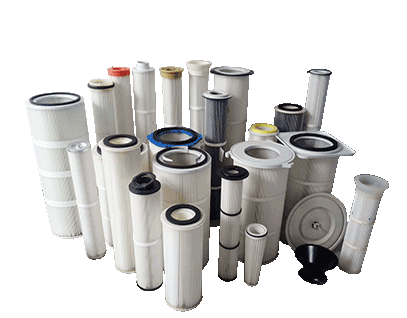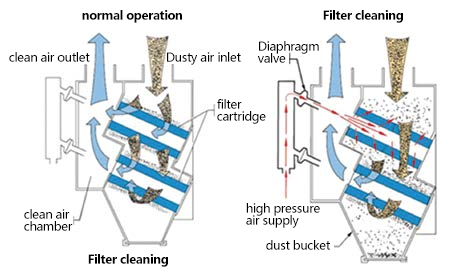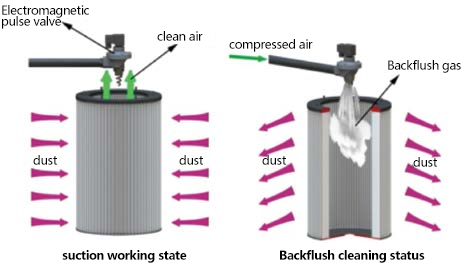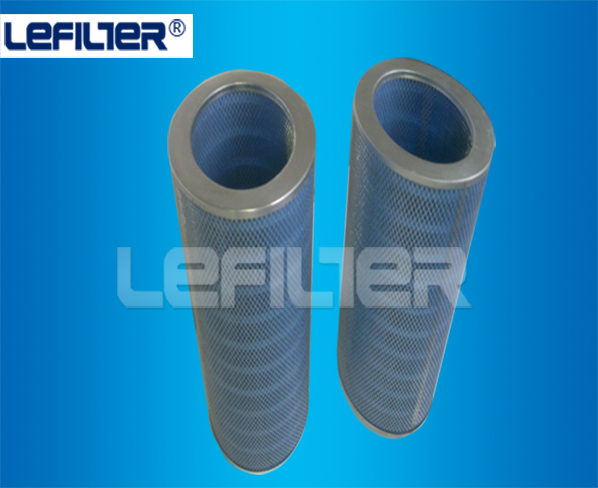Introduction
Air filter cartridges are essential components in various applications where clean air is crucial. These devices are designed to capture and remove contaminants such as dust, pollen, smoke, and other particulates from the air. This article will provide a comprehensive overview of air filter cartridges, including their introduction, working principles, components, technical specifications, and application fields.
Product Overview
Air filter cartridges, also known as air filter elements, are cylindrical or conical devices used to filter air in various systems. They are widely employed in industries such as manufacturing, automotive, and HVAC (heating, ventilation, and air conditioning) to ensure that the air passing through is free from harmful particles. The primary purpose of air filter cartridges is to improve air quality, protect equipment, and enhance the overall efficiency of air handling systems.

Working Principle
The working principle of an air filter cartridge is based on mechanical filtration. As air flows through the filter media, particles larger than the pores of the media are trapped and held, preventing them from passing through. The efficiency of an air filter cartridge depends on the size of the filter pores and the type of filter media used. There are several types of filter media, each with its unique working mechanism:
Fiberglass Media: This type of media consists of fine glass fibers arranged randomly to create a dense mat. As air passes through the mat, particles are captured by the fibers through interception, impaction, and diffusion.
Synthetic Media: Made from polyester or polypropylene fibers, synthetic media offers high durability and resistance to moisture. The fibers are electrostatically charged to attract and capture particles more effectively.
Paper Media: Paper filter media is made from cellulose fibers and is often pleated to increase the surface area. This type of media is cost-effective and efficient at capturing larger particles.
Activated Carbon Media: Activated carbon media is impregnated with activated carbon, which adsorbs gases and odors from the air. This type of media is commonly used in applications where odor control is essential.
Product Components
Air filter cartridges are composed of several key components, each playing a vital role in the filtration process:
Filter Media: The filter media is the core component of the air filter cartridge. It is responsible for capturing and holding particulates from the air. The choice of filter media depends on the specific application and the type of contaminants that need to be removed.
End Caps: The end caps are used to seal the filter media and provide structural support. They are typically made from materials such as metal, plastic, or rubber. The end caps ensure that air flows through the filter media and not around it.
Inner and Outer Cores: The inner and outer cores provide additional support to the filter media, preventing it from collapsing under pressure. These cores are usually made from perforated metal or plastic.
Gaskets: Gaskets are sealing components that prevent air from bypassing the filter media. They ensure that all air passes through the filter media for proper filtration.
Pleat Support Bands: In pleated filter cartridges, pleat support bands are used to maintain the spacing and shape of the pleats. This helps maximize the surface area for filtration and improves the overall efficiency of the filter.
Technical Specifications
The performance and suitability of an air filter cartridge are determined by several technical specifications, including:
Filtration Efficiency: Filtration efficiency measures the filter's ability to capture particles of different sizes. High-efficiency filters, such as HEPA (High-Efficiency Particulate Air) filters, can capture at least 99.97% of particles as small as 0.3 microns.
Airflow Resistance: Also known as pressure drop, airflow resistance measures the resistance the filter imposes on the airflow. Lower resistance is generally preferred, as it allows for better airflow and reduces the workload on the air handling system.
Dust Holding Capacity: Dust holding capacity indicates the amount of dust the filter can hold before it needs to be replaced. Filters with higher dust holding capacity require less frequent maintenance and replacement.
Dimensions: The dimensions of the air filter cartridge must match the specifications of the system in which it will be used. Standard sizes are available, but custom sizes can also be manufactured to meet specific requirements.
Temperature and Humidity Resistance: The filter media and other components must be able to withstand the operating temperature and humidity conditions of the application. Some filters are designed for high-temperature environments, while others are resistant to moisture and humidity.


Application Fields
Air filter cartridges are used in a wide range of applications to improve air quality and protect equipment and processes:
HVAC Systems: In heating, ventilation, and air conditioning systems, air filter cartridges are used to remove dust, pollen, and other airborne particles. This helps maintain a clean and comfortable indoor environment and protects HVAC equipment from damage.
Industrial Processes: In industrial settings, air filter cartridges are used to protect sensitive equipment and processes from contaminants. They are essential in industries such as manufacturing, pharmaceuticals, and food processing, where clean air is critical for product quality and safety.
Automotive: In automotive applications, air filter cartridges are used in engine air intake systems to protect the engine from dust and debris. They are also used in cabin air filtration systems to improve the air quality inside the vehicle.
Cleanrooms: Cleanrooms require highly efficient air filtration to maintain strict cleanliness standards. HEPA and ULPA (Ultra-Low Penetration Air) filter cartridges are commonly used in cleanrooms to remove even the smallest particles and microorganisms.
Agriculture: In agricultural applications, air filter cartridges help protect livestock and crops from airborne contaminants. They are used in ventilation systems for animal housing and in greenhouses to maintain optimal growing conditions.
Healthcare: In healthcare facilities, air filter cartridges play a crucial role in preventing the spread of infections. They are used in operating rooms, isolation units, and other critical areas to maintain a sterile environment.
Compressed Air Systems: In compressed air systems, air filter cartridges are used to remove oil, water, and particulates from the compressed air. This helps protect pneumatic equipment and ensures the quality of the compressed air.
Conclusion
Air filter cartridges are indispensable tools in maintaining clean and healthy air across various settings. By understanding their working principles, components, technical specifications, and application fields, we can appreciate the vital role they play in improving air quality and protecting health and equipment. Whether in residential, commercial, industrial, or specialized applications, air filter cartridges are essential for ensuring that the air we breathe is safe and clean.
Other Related Products:
Long Bag Offline Pulse Dust Collector
Single-machine pulse jet bag dust collector
Low Pressure Jet Pulse Bag Filter
{sval:sql sql='SELECT n_parameter FROM dede_addonarticle WHERE aid = ~aid~ ' } {/sval:sql}
{sval:sql sql='SELECT n_parameter FROM dede_addonarticle WHERE aid = ~aid~ ' } {/sval:sql}





















